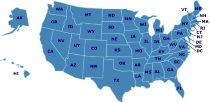Things to See & Do in Ohio
Shankar's International Children's Competition (SICC)
K. Shankar Pillai (July 31, 1902–December 26, 1989) was a famous cartoonist. He brought out a political magazine called ‘Shankar’s Weekly’. Under the auspices of this magazine, a competition called the Shankar’s International Children’s Competition was organized in 1949. It invited paintings and writings from children in India. Children sent about 3,000 entries. The following year the competition was thrown open to children from all over the world.
Today, the competition has grown and about 1,60,000 entries are received from over 130 countries. The entries are judged by an international jury. The prizewinning entries are compiled in a volume called the ‘Shankar’s Children’s Art Number’. The competition is open to children all over the world below the age of 16 years. There is no entry fee and competitors are free to choose the theme/subject they are interested in, or like most, for their paintings/ drawings/writings.
SOS Children's Villages - USA Family Dinner Time Art Contest
The Family Dinner Time Art Contest celebrates family dinner time and kicks off on Thanksgiving each year. Children may submit artwork of their family at dinner time to win a home computer. Artwork can be in any form, but must illustrate a family eating together. For sculptures and other difficult-to-ship items, please send a photo as opposed to the actual artwork.
A winner will be selected from each age group: preschool ages 1-7; grade school ages 8-12; and high school ages 13 -17.
Teaching Tips & Ideas
Masterpiece Art Instruction
Masterpiece Art Instruction offers a free newsletter, "Teach Art at Home," along with free projects and lessons, art instruction CDs, and more
How I Teach a Large Family in a Relaxed, Classical Way: Fine Arts
Ideas for incorporating fine art education into a large homeschool family curriculum.
Featured Resources
As an Amazon Associate, we earn from qualifying purchases. We get commissions for purchases made through links on this site.
Greenleaf Press
Greenleaf Press is a small family-owned and operated publisher and supplier of quality books for children. They are committed to "twaddle-free", living books, and approach teaching history to children using biography and chronology. You will find sections in the catalog covering each major historical period in order, with a variety of biographies, reference books, and historical fiction. For Israel, Egypt, Greece, Rome, the Middle Ages, and the Renaissance and Reformation there are Greenleaf Stu...
America's Spectacular National Parks
The concept of the national park is an American contribution to world civilization, and it remains a defining characteristic of our country. From the rocky shore of Maine's Acadia to the barren crater and lush rain forest of Hawaii's Haleakala, America's national beauty is celebrated and preserved in its national parks. This book retells the history of each park, describes its most important features and wildlife, and reproduces its gorgeous scenery in full-color photographs that will enthrall a...
Homeschoolers' Success Stories : 15 Adults and 12 Young People Share the Impact That Homeschooling Has Made on Their Lives
Despite their growing numbers, many homeschoolers still find their experience somewhat isolating. This collection of short biographies aims to alleviate some of that loneliness. While the stories profile modern-day homeschool grads and students, famous homeschooled personalities from the past are offered up early in the book for historical inspiration. John Adams, Abraham Lincoln, steel magnate Andrew Carnegie, newspaper publisher Joseph Pulitzer, photographer Ansel Adams, poet Robert Frost, and...
Right-Brained Children in a Left-Brained World: Unlocking the Potential of Your ADD Child
Understanding your child's learning style can help with challenges in learning, improving outcomes in reading, writing, and behavior. This book offers strategies for understanding your child's learning style and presents tools that you can use to become more successful in your homeschooling.
Dr. Montessori's Own Handbook
A short, illustrated guide to the use of Montessori classroom materials. Describes how to set up a "children's house" - an environment for learning where children can be their own masters.




